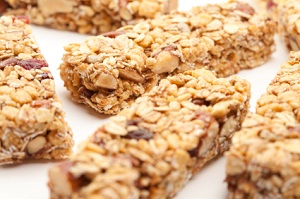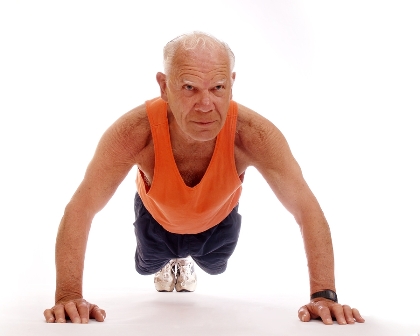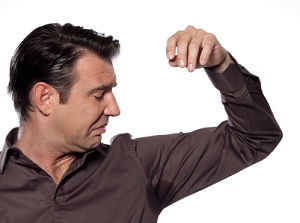
High Expectations
The number one downfall to believing all the hype associated with on the go energy bars lays not in the product, but within consumer expectations. Regardless of what these products are marketed as and the promises that are made, you will not find miraculous ingredients inside any energy bar that will sustain you for any longer than any other meal might.
Our bodies need energy and we obtain that energy from fuel. Fuel is supplied to our bodies via food sources that contain fat, protein and carbohydrates, as well as the vitamins in that food. Therefore, any food we eat will supply us with the necessary fuel needed to keep us on the go, even if only temporarily. Foods that are high in glucose and sugars will give us a surge of energy, but because it burns quickly, we only sustain that energy for a short time and then experience the ‘sugar crash’ where we feel sleepy and unmotivated.
Because our bodies do not differentiate how our food is packaged and it can’t read labels, it doesn’t matter how we ingest the food or whether it is marketed as a promising energy bar; we simply need to obtain food period.
They Aren’t Created Equal
What should be addressed with on the go energy bars and their worthiness is the actual ingredients that they contain because they are not created equally. Those who fall for the coined phrase ‘energy’ often do their bodies a disservice by eating the energy bars that are nothing more than candy bars, packed with sugar and calories, but offer little as energy sources.
Even if the packaging contains flashy logos that scream ‘nutritious, healthy and energizing’ don’t take them at face value. Some of the leading energy bars have very high sugar contents, and many manufacturers disguise the word sugar in various, lesser known names such as glucose and maltodextrin. Additionally, many also contain hydrogenated oil which is simply another name for bad trans fat which is not healthy.
Carefully check the ingredients and then determine if the majority of them are truly energy source providers. The ingredients you want to see at the front of the list are things such as protein, oats, soy, and some carbohydrates as well. The most substantial ingredients will always be listed first so if these ingredients fall to the end of the list, forgo that particular bar.
High in Empty Calories
Taking in calories is essential to sustain energy, but it has to be the right amount of calories and the source from which those calories come needs to be healthy. Some of the on the go energy bars are staggeringly high in calories (as much as 800 per small bar) but much of those calories comes from the sugar they contain. These bars will offer a burst of energy but it won’t sustain you, you will likely feel less energized sooner rather than later and you risk going way over your recommended caloric intake.
Some of the healthier bars will be in the 200-300 calorie range and most of those calories will come from the carbohydrates which are needed for energy and other things like protein and good fats from essential oils.
Expense
Keep in mind that most of the energy bars are pricey so you will have to weigh out the worthiness here too. Most bars will run anywhere from $2.00 to $ 4.00. Multiply that by five to seven days a week and it can add up.
The Lesser Evil
What is good about the more nutritious energy bars is that they are a better option than skipping meals altogether, which will ultimately make you more tired and will slow down your metabolism. Having them handy when you are on the go is at least a way to fuel your body for the time being until you can eat a real meal.
They are also a good option if you work out and need a snack to sustain you during aerobic or cardiovascular activities and many health professionals will recommend them over eating nothing or snacking on other quick treats like a candy bar or bag of chips.
For more articles go to http://lifesportfitness.lifestyleezine.com

 There are hundreds of supplements available on the market that make promises of being the best supplements for fitness and health. Aside from the fact that many don’t live up to their claims, consumers also have to sort through the flurry of information on each of them in order to conclude which will actually benefit them. Depending on what you are trying to accomplish, this task can be challenging as not all products are created equal and many are tailored to produce specific results. The first thing that should be considered when choosing a supplement is gender. Men and women’s bodies are vastly different in genetic make-up and thus will respond to products differently. Typically the fitness goals of men will differ from women’s and this too will impact which supplements will work for them as opposed to women.
There are hundreds of supplements available on the market that make promises of being the best supplements for fitness and health. Aside from the fact that many don’t live up to their claims, consumers also have to sort through the flurry of information on each of them in order to conclude which will actually benefit them. Depending on what you are trying to accomplish, this task can be challenging as not all products are created equal and many are tailored to produce specific results. The first thing that should be considered when choosing a supplement is gender. Men and women’s bodies are vastly different in genetic make-up and thus will respond to products differently. Typically the fitness goals of men will differ from women’s and this too will impact which supplements will work for them as opposed to women.  Managing to stay fit at any age presents its own set of hurdles and challenges, particularly in our older years when metabolisms begin to slow down and our muscles, bones and joints aren’t as strong as they once were. Far too many people associate being fit with being skinny, but there are definitive differences between them, and this is never more apparent than during the later years of life when some forms of exercise simply aren’t an option anymore.With age our joints, muscles and bones will inevitably become frailer and thus are more sensitive and prone to injuries than in younger years. Because of things like arthritis and osteoporosis, we may find that are options are limited when it comes to staying fit, but there are still plenty of exercises that one can do in their 50’s and continue to do well into their 80’s or 90’s.
Managing to stay fit at any age presents its own set of hurdles and challenges, particularly in our older years when metabolisms begin to slow down and our muscles, bones and joints aren’t as strong as they once were. Far too many people associate being fit with being skinny, but there are definitive differences between them, and this is never more apparent than during the later years of life when some forms of exercise simply aren’t an option anymore.With age our joints, muscles and bones will inevitably become frailer and thus are more sensitive and prone to injuries than in younger years. Because of things like arthritis and osteoporosis, we may find that are options are limited when it comes to staying fit, but there are still plenty of exercises that one can do in their 50’s and continue to do well into their 80’s or 90’s.  The fitness industry has been preaching exercise to an aging population for better health and
The fitness industry has been preaching exercise to an aging population for better health and Body odor is unpleasant , and yet, what causes the odor is one of the most natural processes in the human body. There are times when body odor may become stronger than usual and if we’re unprepared and can be embarrassing. In this article we are going to take a little look at a couple of ways in which you can reduce your body odor, or perhaps eliminate it all together. Follow these tips and you will be smelling fantastic!
Body odor is unpleasant , and yet, what causes the odor is one of the most natural processes in the human body. There are times when body odor may become stronger than usual and if we’re unprepared and can be embarrassing. In this article we are going to take a little look at a couple of ways in which you can reduce your body odor, or perhaps eliminate it all together. Follow these tips and you will be smelling fantastic! Exceeding the demands of duty can inflame stress and increase your risk for burnout. Taking time to relax and regroup is not a luxury-it’s an essential part of a balanced life.It’s a contemporary cliché-the classic tale of the star performer who begins with a bang and ends with a fizzle, all that high energy and enthusiasm simply fading away.
Exceeding the demands of duty can inflame stress and increase your risk for burnout. Taking time to relax and regroup is not a luxury-it’s an essential part of a balanced life.It’s a contemporary cliché-the classic tale of the star performer who begins with a bang and ends with a fizzle, all that high energy and enthusiasm simply fading away. If you workout or have played fun sports, you are most likely familiar with icing an injury. While ice is the standard protocol for some injuries, you are probably also common with using heat to ease tense muscles. So when should you be using a cold compress and when must you be using heat? The following article is a basic guide to help you treat your injury effectively.Pain after an injury or overuse of an area of your body is mostly a result of swelling or inflammation of the affected tissue whether it is bone, muscle, ligament or tendon.
If you workout or have played fun sports, you are most likely familiar with icing an injury. While ice is the standard protocol for some injuries, you are probably also common with using heat to ease tense muscles. So when should you be using a cold compress and when must you be using heat? The following article is a basic guide to help you treat your injury effectively.Pain after an injury or overuse of an area of your body is mostly a result of swelling or inflammation of the affected tissue whether it is bone, muscle, ligament or tendon.